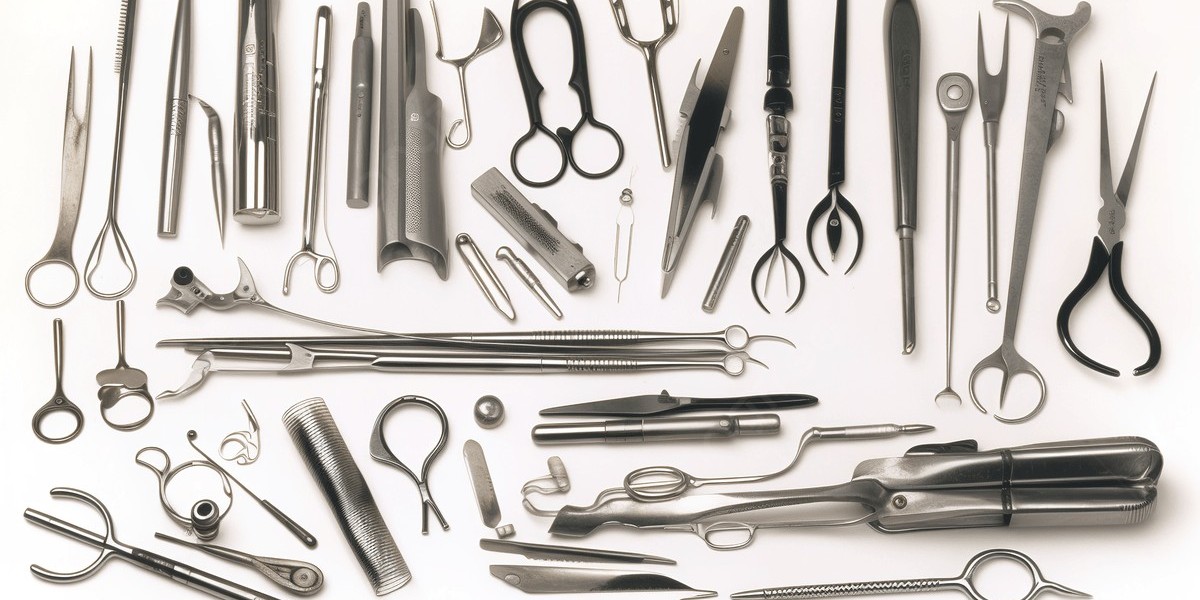Surgical procedures require precision, safety, and efficiency. To achieve these, a wide range of surgical instruments and equipment are used. Each instrument has a specific function, from cutting and dissecting tissue to retracting organs and suturing wounds. Understanding the names and purposes of surgical equipment is essential for medical professionals, students, and anyone interested in healthcare.
1. Cutting and Dissecting Instruments
These instruments are used to cut tissue, skin, or bones and prepare the surgical site:
Scalpel: A small, sharp knife used for precise incisions.
Surgical Scissors: Includes Mayo, Metzenbaum, and Iris scissors, each for cutting tissue of varying thickness.
Bone Cutters: Used in orthopedic surgery to cut or shape bones.
Rongeur: A heavy-duty instrument for removing small pieces of bone.
2. Grasping and Holding Instruments
These instruments are designed to hold or manipulate tissue during surgery:
Hemostats: Clamps like Mosquito, Kelly, and Crile are used to control bleeding.
Needle Holders: Webster and Mayo-Hegar are used to hold surgical needles during suturing.
Thumb Forceps: Adson and Debakey forceps help in handling delicate tissue without causing damage.
Sponge Forceps: Used to hold gauze or sponges during procedures.
3. Retracting and Exposing Instruments
Retractors are used to hold back tissue and organs, providing a clear view of the surgical field:
Senn Retractor: A small hand-held retractor for superficial tissues.
Harrington Retractor: Ideal for deep abdominal surgeries.
Army-Navy Retractor: Used for shallow surgical exposure.
Gelpi and Weitlaner Retractors: Self-retaining retractors for holding tissue apart.
4. Clamping and Occluding Instruments
These tools control bleeding or secure blood vessels:
Hemostatic Clamps: Mosquito, Kelly, and Crile clamps are standard in most surgeries.
Vascular Clamps: Used in cardiovascular and vascular procedures.
Bulldog Clamps: Small clamps for delicate vessels.
5. Suction and Aspiration Instruments
These instruments remove blood, fluids, or debris from the surgical site:
Yankauer Suction Tip: General suction in various surgeries.
Poole Suction Tip: Removes large volumes of fluid during abdominal procedures.
Suction Tubing: Connects tips to suction devices.
6. Suturing and Stapling Instruments
Used to close wounds or surgical incisions:
Needle Holders: For handling needles and sutures.
Sutures: Absorbable and non-absorbable threads for stitching tissue.
Skin Staplers: Quick closure of large incisions.
7. Probing and Dilating Instruments
Used for exploration, probing, or dilation of body passages:
Urethral Sounds: Explore and dilate the urethra.
Probes: Like lacrimal probes used in ophthalmology.
Bougies: Gradually dilate strictures in tubular organs.
8. Specialized Surgical Instruments
These instruments are designed for specific types of surgeries:
Orthopedic Instruments: Bone drills, plates, and screws.
Laparoscopic Instruments: For minimally invasive surgery.
Endoscopic Tools: For visualization and manipulation inside organs.
Electrosurgical Devices: For cutting tissue and coagulating blood simultaneously.
9. Diagnostic and Measuring Instruments
Used during surgery for examination and measurement:
Tonometer: Measures pressure within tissues or cavities.
Calipers and Rulers: Measure size or depth of incisions.
Surgical Thermometers: Monitor patient temperature.
10. Miscellaneous Surgical Equipment
Surgical Trays and Basins
Sponges and Gauze
Dressing Forceps
Needle Counters
Conclusion
Understanding the names and functions of surgical equipment is crucial for safe and effective surgical procedures. From cutting and dissecting tools to retractors, clamps, and suturing instruments, each tool plays a vital role in ensuring precision, minimizing tissue trauma, and improving patient outcomes. Proper knowledge and handling of surgical instruments are essential for surgeons, operating room staff, and medical students to maintain efficiency and safety in every operation.





